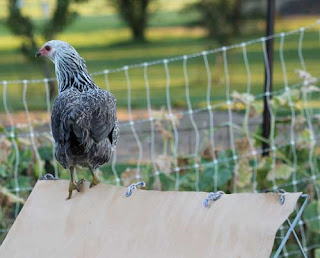It is reasonable to assume that the shadows are long at the beginning and ending of every day, but somehow it feels like they grow longer in the fall. Perhaps it’s because the long shadows of summer happen before I get up or when I’m getting ready for bed.
 |
| The long shadows of fall |
Last year, the raspberry harvest was a near-total fail. Terry was afraid it was because the river birches were shading the patch, and he was going to have to cut some out. I proprosed that it was because of a cold, wet June. Fortunately, I was right, and the birches are spared. We are back to abundant raspberries this year, and that means two things. First, I could make a raspberry pie, which I shared with a few friends. Love raspberry pie!
 |
| Raspberry pie, courtesy of Kate K. |
Second, I can make jam again, also know as turning my
kitchen into one big, sticky mess. Terry used to pick raspberries every other
day. This year he experimented with picking three days in a row and taking one
day off. While there are a few more berries that are not quite ripe, there are WAY
fewer picnic bugs. I can hardly believe how clean the berries are.
I know I’ve blogged about making jam before, but frankly that’s about all I’ve got to write about this week. The first step is crushing the berries in a food mill. This removes perhaps half of the seeds.
 |
| Sieving the washed berries |
Once I have five cups of crushed-and-sieved raspberry juice, I put in the SureGel, bring it to a full roiling boil, add a breathtaking amount of sugar, and boil it one minute.
 |
| Bringing to a boil |
The jam gets put in jars; the jars go into the canner. And there you have it—raspberry jam.
 |
| Jam ready for the pantry |
I put all the dirty dishes in one place for a dramatic photo.
 |
| And the clean up |
I have not yet cut either of the giant watermelons that have been growing most of the summer. The vine going to one of the more recent fruits dried up, and knowing it wouldn’t get any riper, I picked it and cut it open. My expectations were low, as it hadn’t had a lot of time to develop, but it turned out to be perfectly ripe and delicious except near the rind. I hope this does not mean that the giant melons are rotten inside. I’ll have to cut one soon.
 |
| Test watermelon |
Terry alerted me to chicken mushrooms growing on the enormous oak log that graces our front lawn. The mushroom guide says chicken mushrooms are choice and taste like chicken. We learned a long time ago that in this context, “choice” is a code word for “won’t kill you.” “Choice” giant puffballs and hen-of-the-woods are not good to eat. The chicken mushrooms are likely all the same fungus that has spread throughout the log, but they are sprouting in four different places. The largest is on the cut end.
 |
| Chicken mushroom on the cut end of a huge oak log |
Two smaller ones are on the top.
 |
| Two on the top |
The fourth one is around knot where a branch once grew.
 |
| The fourth one on top of a side branch |
I saw a pretty little flower growing at the edge of the garden. Peterson’s flower guide let me down, and I had to resort to Google. After a few false starts, I finally hit on the right search words to turn up Hybiscus trionum. It is not native and goes by numerous common names, such as flower-of-an-hour and bladder hibiscus.
 |
| Hybiscus trionum |
The bladder part comes from the inflated, lantern-like buds, which persist right through fruit development, like ground cherries or tomatillos.
 |
| Bladder buds |
That’s all the news for this week.








































